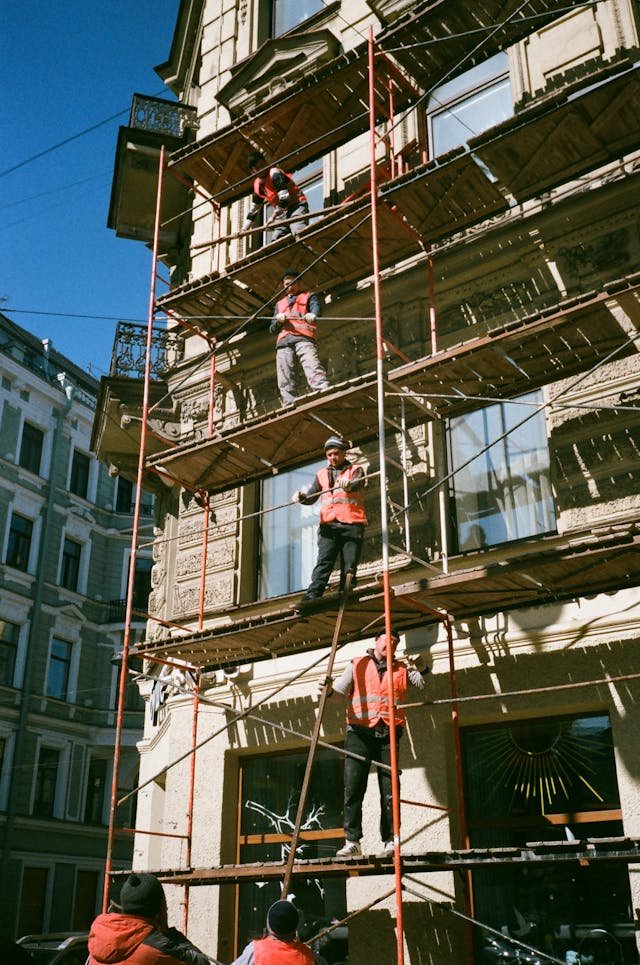Construction work is often characterized by working at heights. This is dangerous in its own right. Scaffolding is the line between support and safety, but it only works when used correctly to protect workers from accidents. One slip or oversight can lead to some of the most severe accidents. Thus, proper precautions should be taken to avoid such accidents. Whether an experienced worker or a newbie in construction, adhering to essential safety practices is essential. This article is going to discuss six essential safety tips that every construction worker should observe when working at height on scaffolding.
Inspect the Scaffolding Daily
Before climbing scaffolding, examine it carefully. Look for boards that are loose or have broken parts and any damage that can be seen, which may be weak points. Everyday checks enable one to notice faults beforehand; this makes accidents resulting from structural weaknesses unlikely. In case you detect anything amiss, make a report to your foreman or superintendent at once. Do not attempt to work on scaffolding that is visibly worn or where no check has been done-priority lies in your safety.
Safety Attire
No compromises can be made when working from a scaffold. A hard hat protects the head against falling objects, boots have a non-slip tread that provides the grip necessary to secure movement, and a safety harness is essential, particularly when working on elevated platforms. Always make sure your harness is securely attached to a good anchor point. It is easy to assume that PPE is not an issue until it is too late—don’t wait for the moment an accident happens to see its worth.
Avoid Overloading the Scaffold
Frame scaffolding and other types are designed to support a specific weight, including workers, tools, and materials. Overloading the scaffold can make it structurally fail, putting everyone on and around the scaffold at risk. Always distribute weight evenly and adhere to the load limits as observed by its manufacturer. When using frame scaffolding, make sure that it is properly secured to prevent tipping or buckling due to overweight. Being aware of load limits can save lives and keep the job site running smoothly.
Maintain Three Points of Contact
Climbing onto or off scaffolding should always be done carefully. Use the “three points of contact” rule—keep two hands and one foot, or two feet and one hand, on the scaffold always. This method provides maximum stability and reduces the risk of falls. Avoid carrying tools in your hands while climbing; instead, use a tool belt or hoist to transport materials. Simple habits like this can significantly improve your safety on the job.
Keep an Eye on Weather Conditions
Weather can turn in the wink of an eye, and it is always important to adjust accordingly. Snow or big rain can make scaffolding dangerously slippery or unstable. Stop work and alert your supervisor if conditions become hazardous. Wet surfaces on scaffolding increase slips and strong winds only make balance a problem. Always guarantee that scaffolding comes furnished with the appropriate weather protections, such as guardrails or anti-slip surfaces, which can decrease the chances of risks experienced during untimely conditions.
Never Work Alone on Scaffolding
Working alone on scaffolding is dangerous and against the most basic rules. It’s always advisable to have someone on standby in case of emergencies. A second pair of eyes may also be important to note hazards you may fail to notice. In many cases, scaffolding work requires teamwork, so it should be there to support or assist you. Whether it is stabilizing materials or raising a red flag over a potential problem, cooperation is the difference between being safe and unsafe.
Conclusion
Scaffolding is an essential part of construction, but it must be treated and handled properly in order to be considered safe. By following these six tips, workers can cut their exposure to height risks down and create a safer work environment. Regular inspections, wearing PPE, and staying mindful of weather conditions are all simple yet effective ways to protect yourself and your team. Remember, safety on scaffolding is a shared responsibility—when everyone prioritizes it, the job gets done more efficiently and without unnecessary harm. Stay vigilant, work smart, and keep these tips in mind every time you step onto a scaffold.

